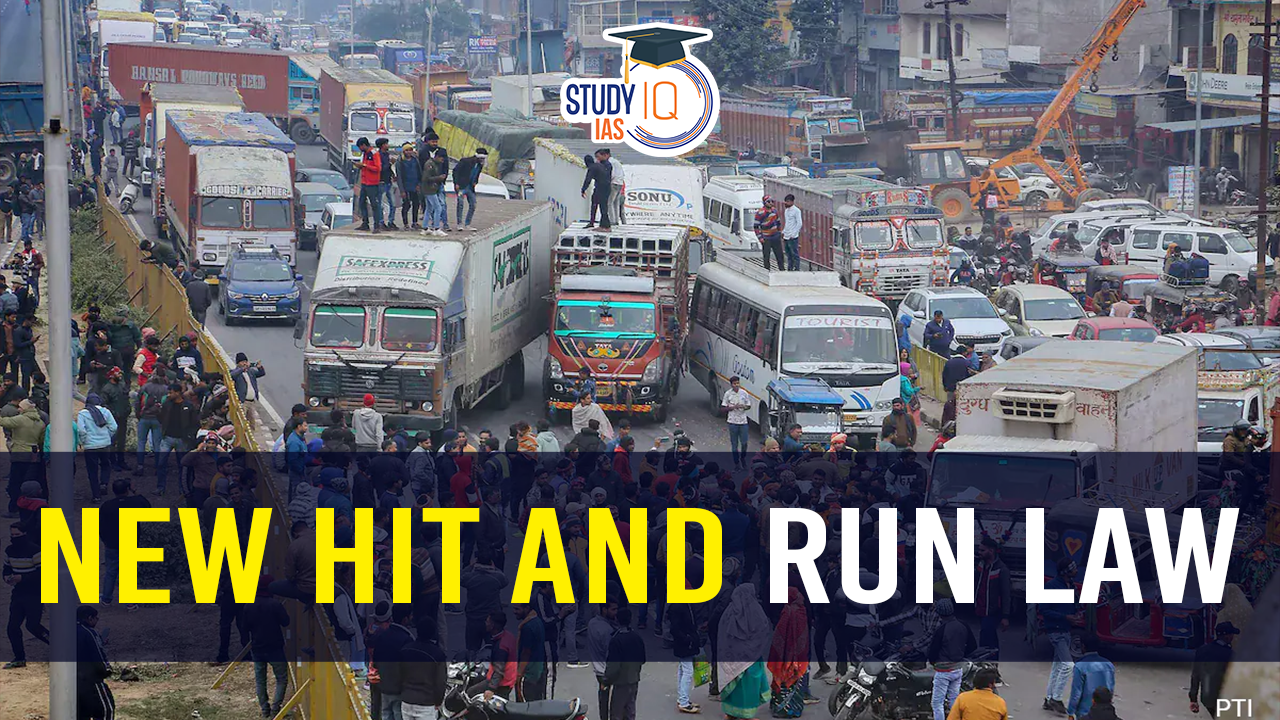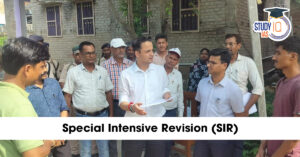Table of Contents
Thousands of truckers across the country are engaged in widespread protests against the newly introduced Hit and Run New Law, causing disruptions on major inter-state highways and key roads. The protesting truckers are demanding a rollback of the new and stringent provisions introduced under the Bharatiya Nyay Sanhita (BNS) for hit-and-run cases.
We’re now on WhatsApp. Click to Join
Why Truck Drivers are Protesting?
Truck drivers across India have initiated nationwide protests against a recent penal provision in hit-and-run cases, causing panic buying of fuel and essential goods in multiple states.To address the concerns of protesting truck drivers strike, the Centre, assured that any decision on enforcing the stringent provisions would only be made after consultation with the All India Motor Transport Congress (AIMTC).
The truckers’ protests have led to panic buying and disruptions in fuel and essential supplies across several states. Cities such as Delhi, Mumbai, Kolkata, and Hyderabad reported long queues at fuel stations and depleted supplies at markets.
Taxi Drivers Take to the Streets Despite Assurances
In response to the newly proposed section in the Bharatiya Nyay Sanhita bill, which stipulates a maximum penalty of 10 years for fleeing the scene of an accident, taxi drivers’ associations organized protests at Jantar Mantar. Despite assurances from the Home Ministry the previous day, hundreds of transporters voiced their objections to this legislation.
What is New Hit and Run Law?
The new hit-and-run law in India is part of the Bharatiya Nyay Sanhita (BNS), which replaced the Indian Penal Code (IPC). The law imposes stricter penalties for drivers who flee the scene of a hit-and-run accident.
The law states that drivers who cause a serious road accident through negligent driving and flee without informing authorities can face up to 10 years of imprisonment or a fine of Rs 7 lakh.
In response to the new law, truck and bus drivers across India have been protesting. On Monday, drivers launched a three-day protest, blocking highways and several other key roads across the country.
New Hit-and-Run Law Overview
| Aspect | Details |
| Law Name | Bharatiya Nyay Sanhita (BNS) |
| Enforcement Date | Recently enacted |
| Key Provision | Stringent penalties for hit-and-run incidents |
| Penalties for Fatal Crash | Imprisonment of up to 10 years and a fine for the accused individual who causes a fatal crash and flees |
| Categories Under “Causing Death by Negligence” | Two distinct categories are established |
| Category One: Rash or Negligent Acts | Offenders may face imprisonment for up to five years
Fine imposed for causing death through rash or negligent acts that do not amount to culpable homicide |
| Category Two: Rash and Negligent Driving | Offenders may face up to 10 years of imprisonment
Fine imposed if they escape without promptly reporting the incident to authorities |
Need of Hit and Run New Law
- Addressing a Grave Issue: The introduction of the new hit-and-run law responds to the alarming annual toll of approximately 50,000 lives claimed by such accidents.
- Enhancing Driver Accountability: Stricter penalties under the new law aim to heighten the accountability and responsibility of drivers involved in hit-and-run incidents.
- Systematic Legal Overhaul: The legislation necessitates changes to the criminal justice system, replacing the outdated British-era Indian Penal Code and making significant amendments to the Criminal Procedure Code (CrPC) and the Evidence Act.
- Empowering Victims: The new law empowers victims by granting them rights to swift compensation and the ability to speak during trials, ensuring a more equitable legal process for those affected by hit-and-run accidents.
- Fostering Road Safety: Through the imposition of stricter penalties, the law serves as a deterrent, promoting road safety and discouraging dangerous driving behavior.
Provisions of Hit and Run New Law
The new hit-and-run law in India, known as the Bharatiya Nyay Sanhita (BNS), imposes stricter penalties for drivers who flee the scene of an accident. The law applies to private vehicle owners.
The law states that drivers who cause a serious road accident by negligent driving and run away without informing the police or any official from the administration can face punishment of up to 10 years and a fine of Rs 7 lakh.
A hit-and-run accident is when a driver is involved in an accident with another property, pedestrian, or car and flees away without providing aid or exchanging insurance details.
Drivers who fear that they will be attacked if they stop at the spot of the accident can go to the nearest police station or can call police or the toll free emergency helpline number 108 and inform about the accident.
Earlier Hit-and-Run Law Comparison
Previous Legislation
Before the introduction of BNS, individuals accused in hit-and-run cases were tried under Section 304A of the Indian Penal Code. The penalties were less severe, with offenders facing imprisonment of up to two years upon identification.
Shift towards Stricter Consequences
The new Bharatiya Nyay Sanhita marks a substantial shift toward more severe consequences for hit-and-run offenses in India, indicating a legislative move to address such incidents more rigorously.
New Hit and Run Law Criticisms and Concerns
- Stricter Penalties: The new hit-and-run law in India under Bharatiya Nyay Sanhita imposes harsher penalties, including up to 10 years in jail and a 7 lakh rupees fine, as opposed to the previous punishment of two years in jail and a smaller fine.
- Driver Discouragement: Some private transport operators express concerns that the stringent law may discourage drivers, potentially leading to unjust punishments and impacting the willingness of individuals to take up driving roles.
- Risk of Mob Violence: Operators worry about the potential for mob violence when drivers attempt to transport injured individuals to hospitals, fearing a hostile reaction from bystanders or communities.
- Blaming Big Vehicles Without Investigation: Truck drivers, in particular, are concerned that law enforcement may hastily blame larger vehicles without thorough investigation, potentially leading to unjust accusations and penalties.
- Harassment and Extortion: The industry raises concerns about potential harassment, extortion, unnecessary detention, and legal consequences for drivers, adding to the challenges faced by those in the transportation sector.
New Hit and Run Law UPSC
The newly enacted Bharatiya Nyay Sanhita (BNS) in India replaces the Indian Penal Code, introducing stringent penalties for hit-and-run incidents. Drivers fleeing after causing a serious accident face up to 10 years in jail or a Rs 7 lakh fine. This sparked nationwide protests by truckers, demanding a rollback. Critics cite concerns about discouraging drivers, potential mob violence during rescues, unfair blame on larger vehicles, and worries about harassment. BNS marks a significant shift towards stricter consequences for hit-and-run offenses.


 Indian Secularism: Constitutional Provis...
Indian Secularism: Constitutional Provis...
 RailOne App: Indian Railways Launches Al...
RailOne App: Indian Railways Launches Al...
 Special Intensive Revision (SIR) of Elec...
Special Intensive Revision (SIR) of Elec...





















